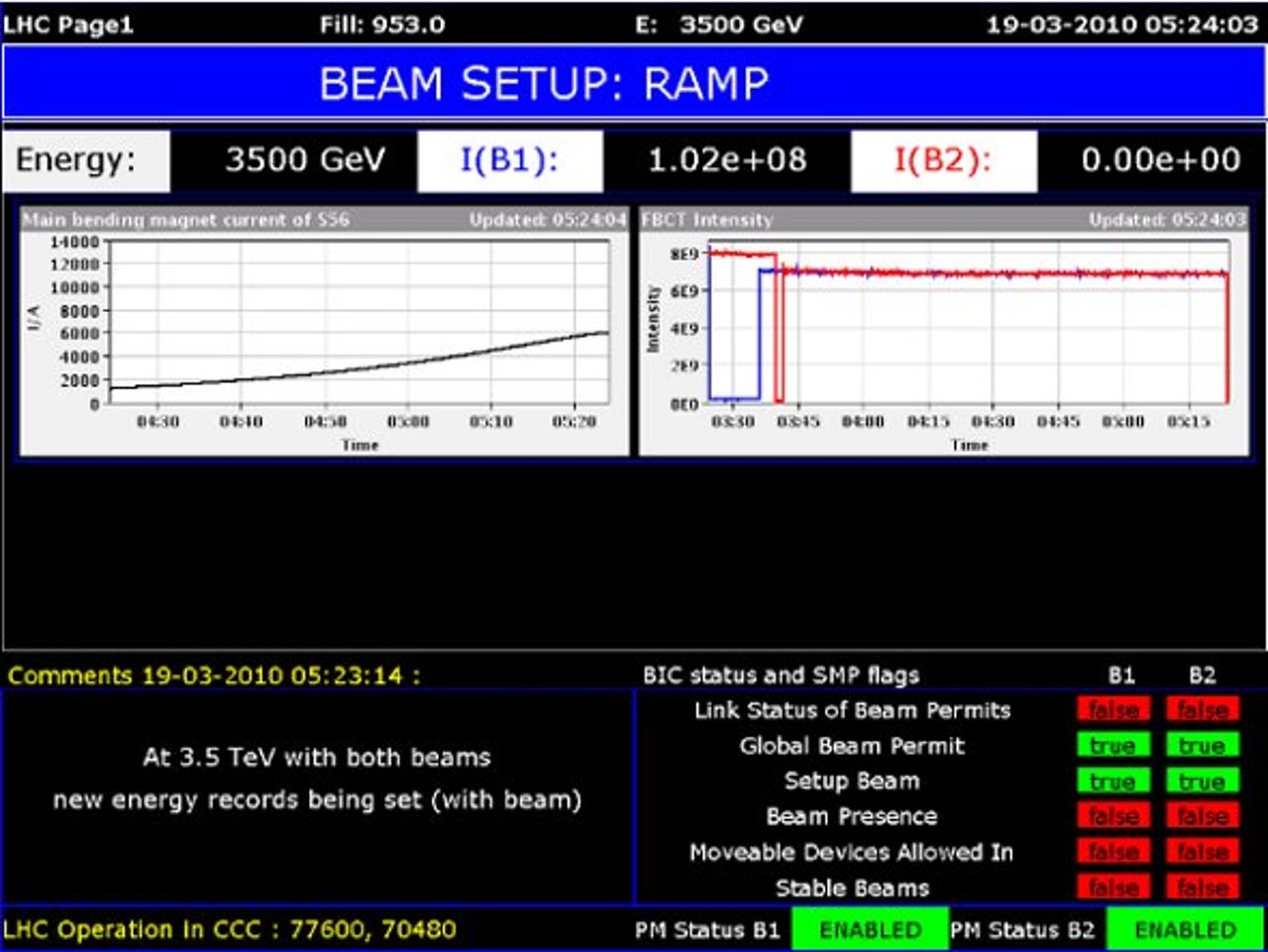LHC takes a step closer to full power

The Large Hadron Collider has reached its highest power so far, taking Cern closer to its goal of using the particle accelerator to conduct experiments that will discover new physics.
Proton beams at 3.5 tera-electron-volts (TeV) were first circulated in the Large Hadron Collider (LHC) at 5:23am on Friday, Cern's director of communications, James Gillies, told ZDNet UK on Friday. Reaching that level of intensity in circulating beams is an important landmark, as it will enable physicists to start working towards the target energy of 7 TeV, he added.
"It's great — there's really nothing in our way now to starting our physics programme for 7 TeV," said Gillies.
Cern's physicists hope the 7 TeV beam intensity will allow them to test out predictions in high-energy physics, including verifying the existence of the Higgs boson, a hypothetical elementary particle. The accelerator, which is funded by countries including EU member states, the US and Japan, is located deep underground in a 27km circuit that spans the French-Swiss border.
Cern did not collide the beams during the Friday circulation, said Gillies, who added that the first collisions should take place within the next few weeks.
Before the beams can be collided, the magnets that focus the beams need to be tested. The magnets will squeeze the accelerated beams to approximately one-tenth of the width of a human hair, before they are smashed into each other.
While the giant particle accelerator is on track to achieve 7 TeV, Gillies said the system was still experiencing "ups and downs". LHC operatives have been having problems with the new quench protection system, which was put in place following a liquid helium leak on 19 September, 2008.
"All of the new hardware and software is being debugged," said Gillies. "The quench protection system is perhaps a little overprotective at the moment. It keeps turning things off when there's no potential for damage."
He added that the LHC had not been designed to be 100 percent reliable, but had been built as its own prototype. The accelerator is now running at 66 percent availability, which normally takes years to achieve, according to Gillies.
Cern director general Rolf Heuer said that while the circulation of the beams in the €3bn (£2.7bn) machine was good news, Cern would take a step-by-step approach to ramping up beam intensity.
"We have recovered well from the incident of 19 September, 2008, and are now poised on the threshold of a new era of discovery," said Heuer in a blog post. "But the legacy of that incident will be with us for some time to come."

A computer screenshot shows the 5:23am achievement of 3.5 TeV beam intensity in the LHC